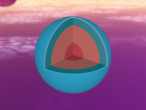This is my presentation in Web3D 2017 Conference on 5th June 2017. The presentation is about my paper titled "Programming Driven 3D Modeling on the Web", which can be downloaded from ACM Digital Library, or from the Publication section in this website. In this paper, I am introducing this VRMath2 application, which incorporates a programmatic approach to create online 3D models and virtual worlds. This programmatic approach of generating online 3D models is conducive to learning in science, technology, engineering, and mathematics (STEM).

























 I
I
